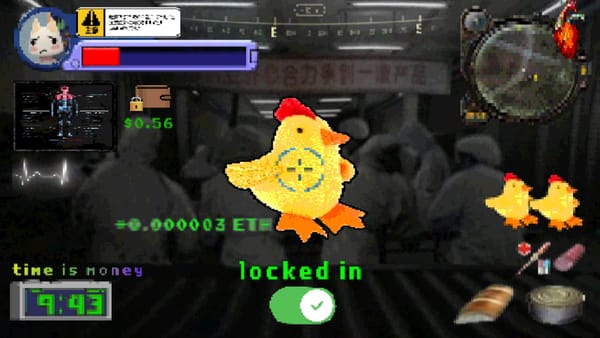How Hannah Diamond broke my heart in high definition
Perfect Picture, her last record on PC Music, comes full circle
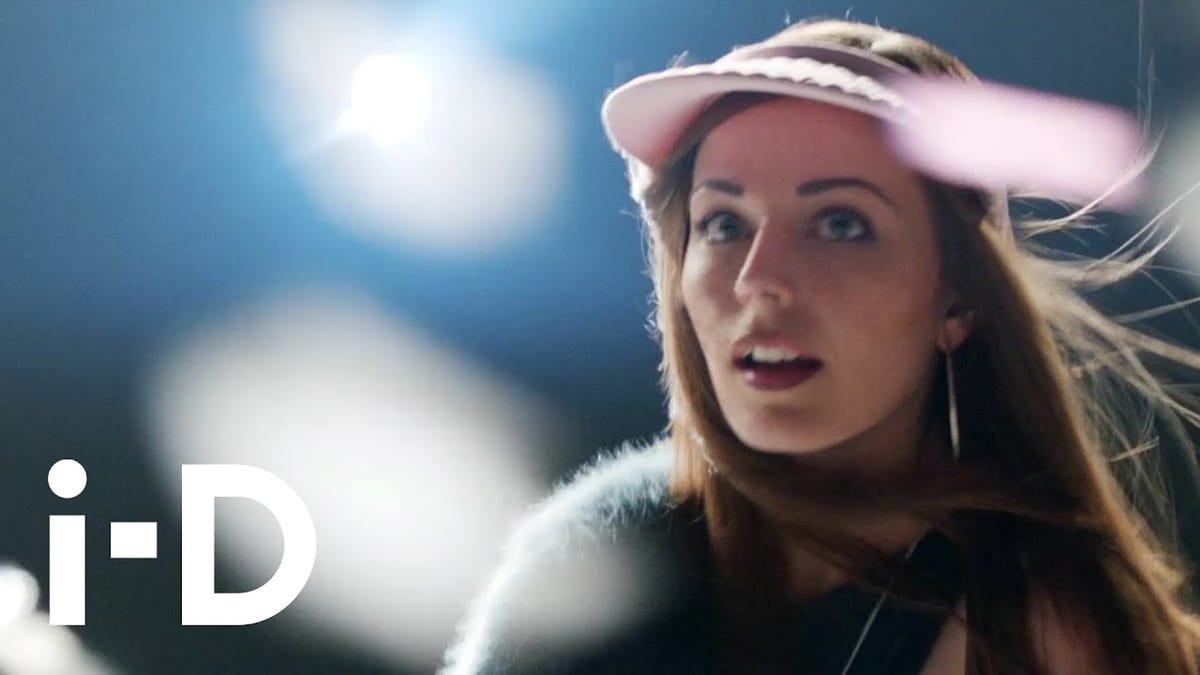
For years, Hannah Diamond has haunted me. She smiles, frozen, from a monitor on the other end of a dark room; she gazes at me from a billboard at night, her face fractured into continents of piercing light by the trees outside my window.
But in Perfect Picture, for the first time since her debut in 2013, she appears in devastating clarity — though in true Hannah1 fashion, she keeps herself at an enigmatic distance, swaying back into the screen after revealing moments of vulnerability. Throughout the record, David Gamson, a producer of near-mythological status amongst bedroom musicians and Soulseek spelunkers alike, trains a stethoscope on Hannah's confessional balladry, filling her private worlds with rich microcosms of melodies. She comes so close to being real that it hurts.
It's a perfect record to commemorate the end of her tenure with PC Music, who recently announced that they’d be releasing the last of their new music this year. It’s also perfect, in particular, for me, a trans woman who Hannah saved from the clutches of quarantine hell, an aspiring songwriter and Scritti Politti obsessive.
To write this piece, I allowed Hannah to break my heart one final time.
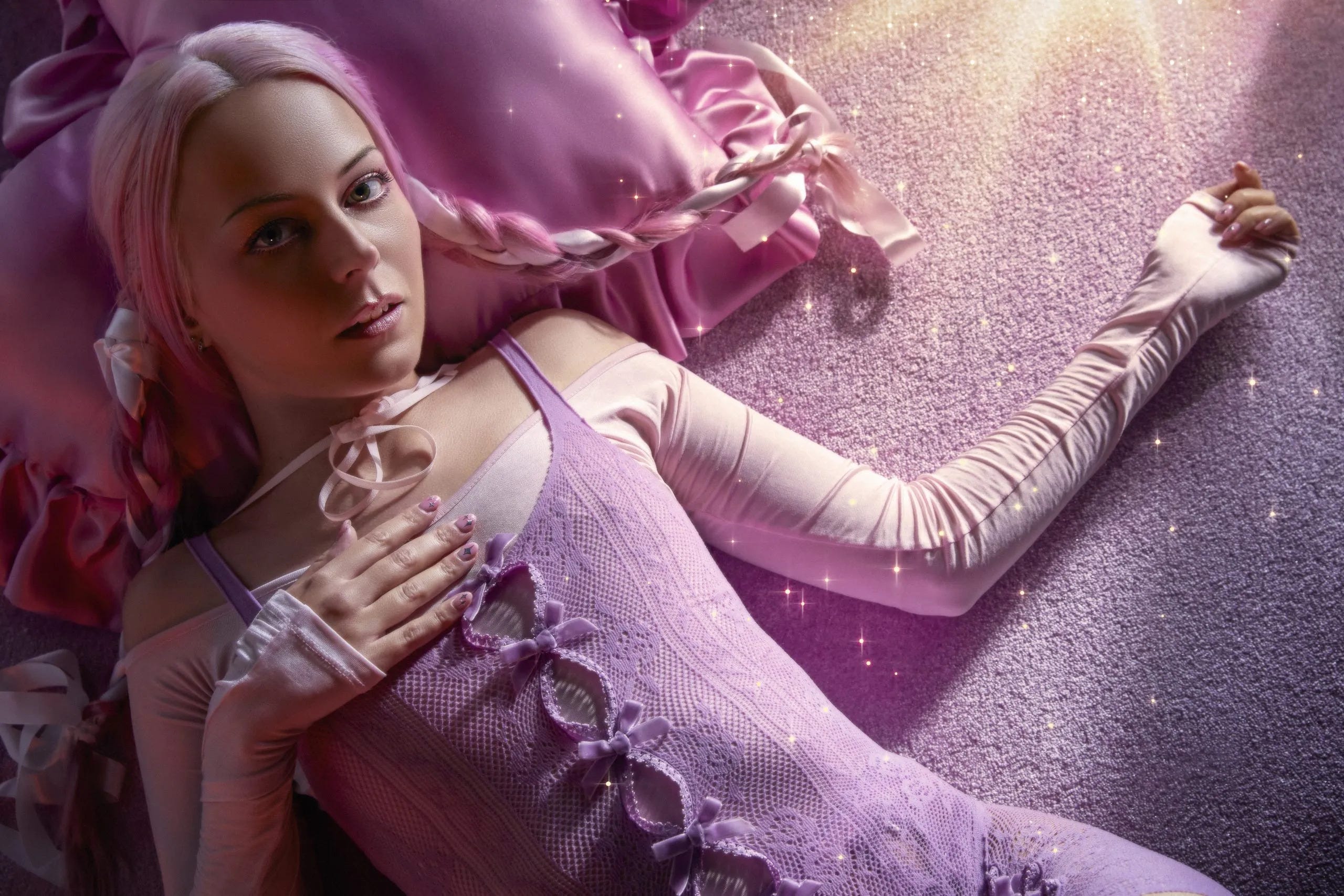
Girls form the fabric of the internet. Anime girls, NPC TikTok girls, bot girls stuffed into your DMs like letterbombs, AI-generated fantasy girls with impossible figures waving at you from a pop-up ad, melting like hallucinations.
In 2013, the year PC Music was founded, the internet didn’t feel quite like this. Though Instagram culture was still relatively nascent, people were becoming more confident in using it as a platform for maintaining digital double-lives. (The term “seflie” had been listed as one of Time’s “buzzwords of the year” the year before.) Meanwhile, identity politics was increasingly becoming a popular framework for conducting social justice arithmetic. Social media enabled users to scrutinize individual accounts based on a set of vectors — race, gender, class, sexuality, etc. — that, in theory, would determine their impact on the material world.
It was into this climate that Hannah emerged, fully formed, answering a cue that only magical internet girls can hear. Her first single, 2013’s “Pink and Blue,” arrived like a love letter from a stranger, rendered in excruciatingly high fidelity.
Whenever she reappeared, more mystery followed. 2014’s “Every Night” felt like a club banger from the void, hyping up a party no one knew was happening. 2015’s “Hi” brought listeners closer, a song that uses bright supersaws and syncopated rhythms to conceal its frostbitten sadness.
In the decade since the world met Hannah, PC Music has become a cultural juggernaut, influencing both the electronic underground and the pop music industry. In addition to Hannah, PC Music’s debut roster included label head A.G. Cook, GFOTY, Danny L Harle, and EASYFUN; with time, frequent collaborators like SOPHIE and Caroline Polachek became associated with the label and its adjacent scene. Their work is defined by clashing themes: pop vs. experimental, harmony vs. dissonance, anonymity vs. intimacy, formalism vs. perversion, nostalgia for past eras of club music vs. the pursuit of visionary sounds.
As a primary architect of the collective’s visual identity, Hannah’s work was instrumental in giving a definite shape to PC Music’s proto-"hyperpop"2 artistry. She channeled her expertise in photography and graphic design into meticulously crafted promotional material, bringing her airbrushed pop star persona to fruition as if from thin air.
Initially, some critics struggled to engage with the music’s aesthetic qualities beyond its visual representation or status as a cultural object. In what was an overall positive piece for Vice, one writer described PC Music’s work as “inherently, unashamedly shallow.” Another writer at The Fader — the same person who wrote a now-infamous piece that accused PC Music and SOPHIE of “feminine appropriation” — characterized their music as “weird and creepy” due to a sense of “futility.”
Others failed to identify anything empowering or liberatory about PC Music’s playful performance of gender. One interviewer, straining to enter gender into a conversation about her work, asked Hannah this clumsy question: “PC Music has been construed as male-dominated, how do you fit in as girl [sic]?” In trying to interrogate the gender dynamics of her work, this question flattens them, reinforcing a mythical dichotomy between an omnipotent male producer and a clueless female performer.
But Hannah’s music is so evocative precisely because it envelops you completely in her world, showing you the exact version of Hannah you want to see. It’s anything but “shallow”; under Hannah’s scrupulous creative direction, product photography and pop ballads become vehicles for sincere self-expression, reflecting the struggle of finding beauty and meaning in the internet’s hall of mirrors.

I’d been waiting for Perfect Picture, without knowing it, for years.
2019's Reflections was one of the main records on my pandemic rotation, soundtracking the vacant and isolated passages of time that pervaded my 2020. Like many other trans people, I entered a new stage of transition under quarantine, preparing to start HRT and gradually altering my wardrobe. I started wearing dresses while strolling through the arboretum; “Love Goes On” still conjures up memories of standing in the greenhouse, admiring the cacti hanging from floating planters. Reflections gave shape to the heartache I experienced during those brittle months, the bottled yearning of a girl skirting the cusp of fiction.
I was still in college when discourse about PC Music’s gender dynamics had begun to emerge, ignited by publications like Vice and The Fader. It would be years before I began my transition, but even then I’d felt disheartened by the trajectory of these conversations.
The incessant speculation about SOPHIE’s gender identity was particularly troubling to me. If gender is fluid, why do we demand that people be judged based on how they “present” in any given moment? How can you abolish the gender binary by shoving anyone who’s questioning, who lives and loves messily, back into the closet? What happens to the trans women who are trying, quietly determined, but just aren’t “there” yet? Are they doomed to be men forever, even in the vast anonymity of the internet?
These questions never received answers, even after both SOPHIE and I had publicly announced our respective transitions into womanhood. But later, in 2020, Reflections taught be about the heartbreak I’d harbored for years — like a friend pointing out the blood on your arm from a wound you can’t feel.
As Hannah’s first full-length record, Reflections was previously the only release to allow the listener an extended stay in her sonic world, crystallizing some of the emotional undercurrents that have been present in her music from the beginning. In all her music, Hannah pines for more than love or understanding; she pines for actualization, for fiction to become reality.
Reflections captures this desperation in vivid detail, both musically and visually. Throughout the record’s varied single artwork, Hannah employs frigid color palettes of blues, greys, and deep purples, coaxing depressive feelings out of images edited in the style of product photography. I related to it immediately.
I identified, in particular, with the longing captured in "Fade Away." There's a heart-tugging moment during each pre-chorus where Hannah sings the lyric "If it's me you like" in a near-whisper. It stands out to me as an example of how effortlessly she injects the synthetic with humanity, that bleeding human heart nestled within the electric bowels of a girl-mecha3.
Mostly, I associate Reflections with the image of NASA's Curiosity rover singing "Happy Birthday" to itself while alone on Mars: a glimmer of android humanity, the truth snaking like a vein through the auto-tune.
David Gamson was also on my mind during the year or so I spent under Reflections’ trance — in fact, he’d been skirting my psychic periphery for even longer.
After college, a lot of the musicians I knew from school began channeling their dormant pop songwriter sensibilities into new projects, stowing away their contact mics and double-kick pedals in order to sit with a guitar or piano and write “from the heart.” For some, one record in particular is considered required listening for anybody who likes writing “pop songs but with weird chords”: Scritti Politti’s Cupid & Psyche 85.
Throughout its nine songs, Green Gartside — the band’s leader and primary member — sings saccharine melodies over fickle chord changes, unearthing hidden harmonies buried throughout the wildernesses of his songs. His lyrics teeter between pop balladry and esotericism, making sneering reference to Marxist politics in songs about girls. His compositional style is so inventive that it inspired Miles Davis to cover "Perfect Way" in his 1986 record Tutu.
What truly makes Cupid & Psyche 85 shine, however, are David Gamson's synth arrangements. Constellations of counter-melodies and drum fills guide the listener across Gartside’s ambitious chord progressions, easing them into shifts in both mood and key. Recorded on the tail end of the pre-MIDI era, Cupid & Psyche 85’s tightly sequenced sound was a technical feat; Gartside and Gamson employed experimental techniques like overdubbing parts over slowed-down tracks in order to achieve it. Reproducing songs like “Small Talk” and “Absolute” in a DAW like Ableton has become a popular exercise amongst aspiring producers I know who also revere Gamson’s immaculate approach to synth arrangement.
Gamson is embedded in the history of PC Music itself. It’s conventional wisdom amongst PC Music fans that A.G. Cook — a co-producer on each of Hannah’s releases pre-Perfect Picture — named his previous label and blog “Gamsonite” as a reference to him. In more ways than one, Perfect Picture comes full circle: for PC Music, for Hannah Diamond, and for me.
I spent 2020 wondering how could my music could sound more like Scritti Politti; in equal measure, I also spent the year wondering how I could be more like Hannah Diamond.
Then, in 2023, Hannah announced Perfect Picture.
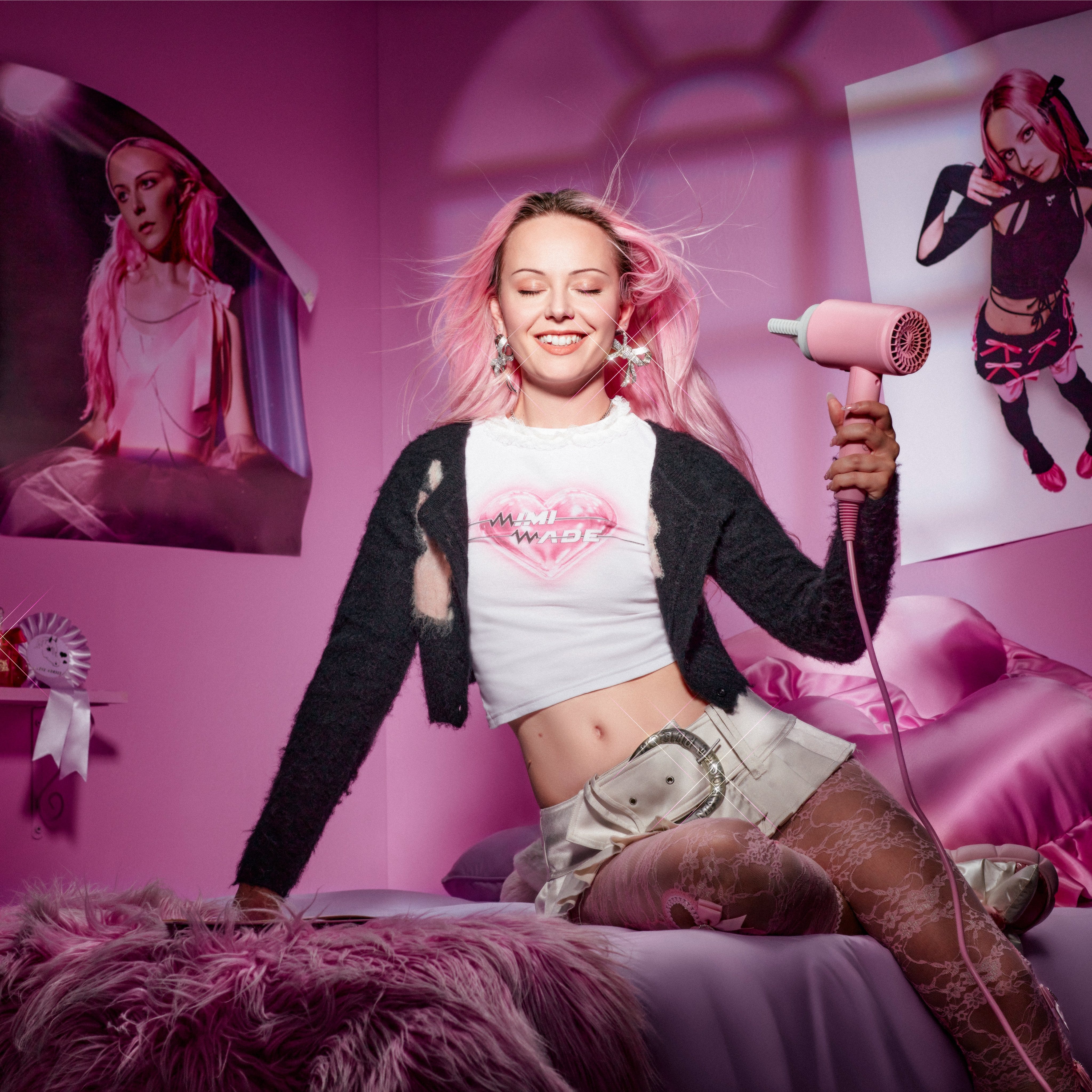
The single art for “Poster Girl” is a gorgeous fiction. A blowdryer sends strands of pink hair into plasmic chaos. Sunlight passes through a window out of view, draping Hannah and the wall behind her in bright, perfect shapes. Even the crease on the poster hanging to her left is a gentle lie, another detail designed to entrap us in the photograph’s fantasy.
It succeeded in bewitching me. Out of all of Perfect Picture’s tracks, I keep returning to “Poster Girl” the most.
Prior to Perfect Picture, Hannah’s songs primarily addressed a love interest4, another way of cohering to the pop song form. Throughout Perfect Picture, however, she becomes the object of her own yearning.
The lyrics and artwork for “Poster Girl” make this inversion explicit. “Lying in my bed / I think a thousand words unsaid / From all the pictures in my head / Where I'm on the wall instead,” she sings to the song’s titular poster girl. Yet in the artwork — which was shot in a detailed recreation of Hannah’s IRL bedroom — it’s clear that Hannah is the girl on the poster, the true subject of the song.
Throughout the record, Gamson’s arrangements ensure that every time the light hits Hannah, no matter what measure or millisecond in the song it is, she’s right there, in high definition, every candid moment a tableau. In “Poster Girl,” voice and synth are twisted together into candied counter-melodies; meanwhile, even more shadows of Hannah lurk in lower octaves below snippets of melodies. Hannah sings alone, but for brief windows of time, she’s surrounded by a garrulous chorus of other voices.
Yet these moments of stunning lucidity make Perfect Picture’s illusions all the more painful to unravel, like dreams from which you never want to wake up.
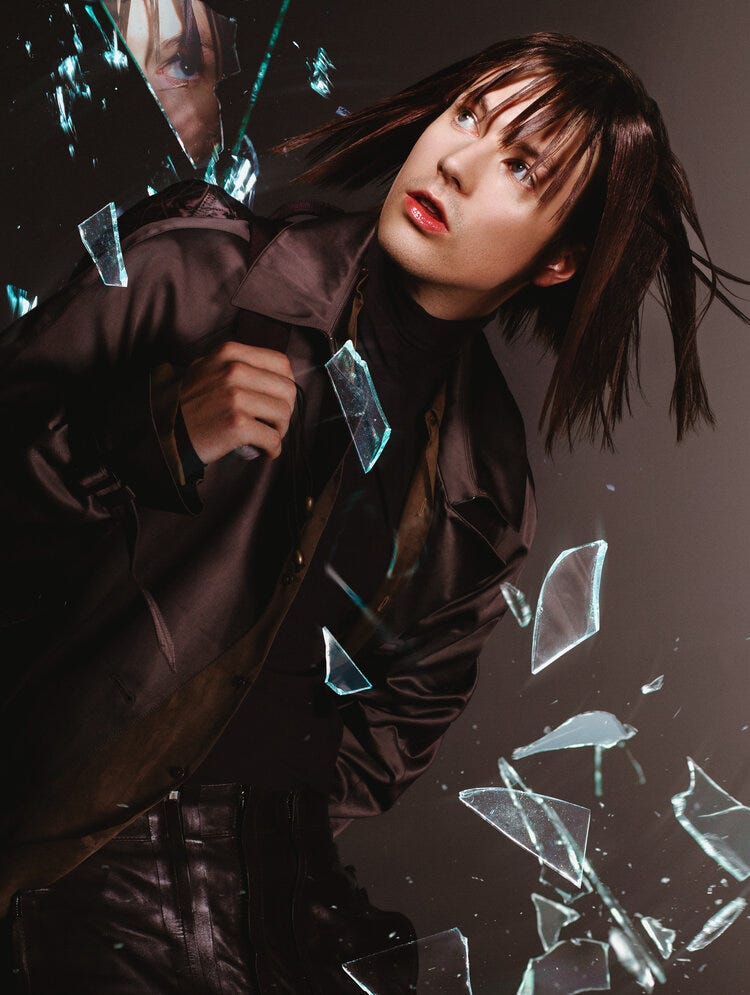
As a photographer and editor, Hannah is adept at balancing crystal-clear realism and airbrushed fantasy. In portraiture, she depicts her subjects with arresting brilliance. Every element of chaos — every shard of broken glass, every lilting flower petal, every reflection — is tempered to assimilate into her utopic scenery.
It’s no wonder that she approaches her self-portraits with similar sensibilities. I'm reminded of this iconic lyric from SOPHIE's "Faceshopping," uttered with quiet confidence, like a mantra, or a koan, or an affirmation: "I'm real when I shop my face."
Yet I consider Hannah and SOPHIE’s music to be opposite one another in themes. Take SOPHIE’s “Immaterial,” for example, a jubilant celebration of self-determined identity. You can feel the earth shake during its drops, as if hundreds of people are rattling the dance floor in tandem with its beat.
But the lyrics contained within Perfect Picture allude to an unattainable self-image, mired in feelings of incompleteness, inadequacy, and a desperate longing to be understood. “No FX” begins as a loving ode to someone who sees her “with no effects on,” yet by the second verse, she suggests that she might be describing herself. “In a world of photo machines / I capture my identity / Airbrush a collage of dreams / Never thought I'd find someone like me,” she sings.
“Impossible” alludes to the distance that separates Hannah from the pixel-perfect renderings of her portraits: “With my eyes closed / You look real to me.” The chorus of “Lip Sync,” a song that echoes the innocent, juvenile fantasizing of “Poster Girl,” ends with the line “Maybe one day I’ll be the real thing.”
It’s surreal to listen to a pop star address herself as an unattainable other. When I first listened to Perfect Picture, it felt at times as though Hannah was singing from my perspective and hers simultaneously, both of us captivated by the romantic ideal of a digital girl that Hannah had woven with her music.

One of the first lessons I learned after starting my transition is that self-actualization is a clumsy and continuous process. In this world, gender is a construct, and gender identity is granted to you by your social conditions; though technology like social media and photo editing software might allow you to exercise a modicum of control over your image, we’re all still tethered to a material reality plagued with inequality. In truth, these are feelings with deep roots in the heart of anyone who has devoted a part of their identity to the internet, regardless of gender.
As an artist, Hannah captures this suffering better than anyone else. She successfully retained her agency throughout the ascent of the social media panopticon, deflecting any critics who attempted to strip it from her. Yet even though Perfect Picture, with the help of Gamson’s impeccable arrangements, presents Hannah at spotless 4K resolution, the sorrow in her music is magnified: throughout it all, she still feels distant from the girl on the screen, the girl she’s spent a decade bringing to life.
It doesn’t get more relatable than that.
I have tickets to see Hannah live next week in LA. It’ll be the first time I see her perform. Even throughout my Reflections phase, I avoided looking up videos of her earlier shows.
It’s not just that I’m afraid that witnessing such a performance might shatter an illusion I have about Hannah — it’s that I’m curious about which illusions it’ll leave intact. I wonder if Gamson’s instrumentals will sound as sublime over the venue PA as they do in my headphones during my walks through the neighborhood. I wonder if Hannah will look different up on stage, where it’s impossible to ensure that each member of the audience gets a perfect view.
But it’s been three years since 2020 and over a year since I started HRT. If Hannah has taught me anything, it’s that it’s okay to confront the gap between our desires and our reality, to acknowledge the pain that arises from the collision between our ideal selves and the limitations imposed on us by our social surroundings.
I said at the beginning that reviewing Perfect Picture meant letting Hannah break my heart just once more. However, maybe that, too, was a hopeless fiction.
I'm using "Hannah" here because it's how press materials refer to her. I figured it'd also feel strange to use either her IRL surname ("Amond") or fictional surname ("Diamond"), but still — the irony of calling her by her first name when we’re strangers to one another is not lost on me. ↩
"Hyperpop" has always felt like a complete sham of a genre label, the undercover cop whose shoes are just a tad too squeaky clean to fit in among the plebs. Concocted by Spotify marketers and algorithm fetishists, "hyperpop" emerged at a time of rapid evolution, a sloppy label for an amalgam of scenes and subcultures that continue to be distinct and constantly in flux. I only use it here for convenience. ↩
A.G. Cook, who produced the majority of Hannah’s music prior to Perfect Picture, tends to treat remixes of his own songs like radical vivisections, stripping and rearranging their parts in order to reveal the emotional dimensions within. His remix of “Pink and Blue" identifies the sadness buried in the original’s bubblegum-coated exterior; “DJ Every Night” turns “Every Night” into an odyssey, oscillating between dance floor euphoria and post-MDMA radiance. ↩
One notable exception is “Reflections,” a song that foreshadowed Perfect Picture’s themes. It opens with the lyrics “So far from perfection / Wish that I could transform my reflection.” ↩



